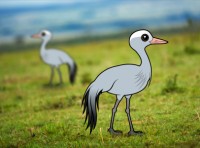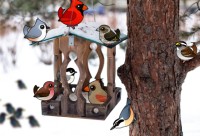2017 Bonanza Bird #8: South Island Takahē

Take a look at this beauty! Today a colorful New Zealand rail joins Birdorable! Introducing our South Island Takahe!
The South Island Takahē is a large flightless species of rail that was once thought to be extinct. A similar species, the North Island Takahe, is only known from skeletal remains.
South Island Takahes are endemic to New Zealand and are managed and protected to ensure the survival of the species.
Once a bird of wetlands and swamps, the South Island Takahe is now a species of alpine grasslands. This move is due to the impact humans have had on the landscape of the South Island -- swamps have been drained and turned into farmland, forcing the takahe to move. They are altitudinal migrants, heading down from the higher alpine habitat when snow covers the land.
Tomorrow a pelagic species joins Birdorable. Can you guess the species from the silhouette alone?






Comments
Leave a comment
Thank you!